
Replacement side wall and siding
In removing the side bay window to make room for the new chimney, I had to rebuild the side of the house from scratch. I used a 1/8″ plywood base and cut 1/2″ lap Houseworks siding for the outer layer. This isn’t exactly the same as the Dura-Craft siding pieces, but I think it is close enough.
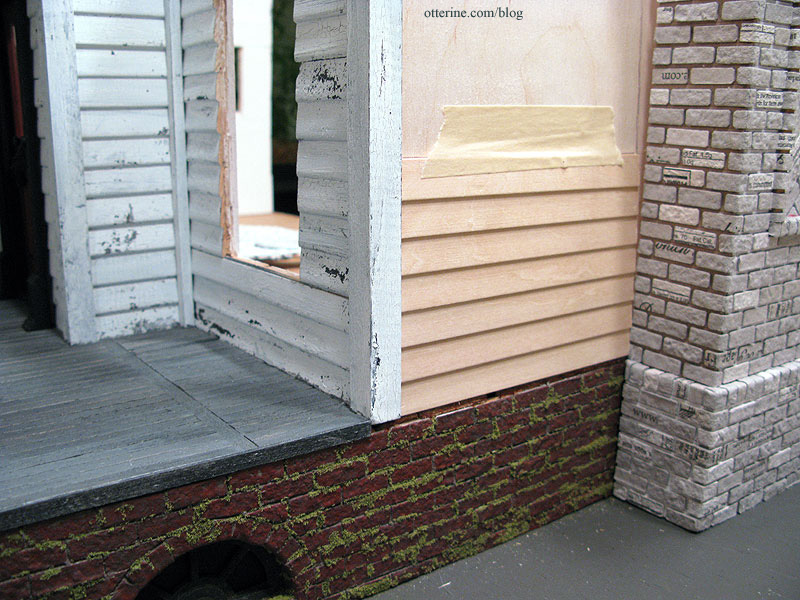
The difference is somewhat disguised by the fact that there is a connector separating the front and side walls. There will also be the rusted furniture on the front porch and weathered painting that should also draw the eye away from any discrepancies. Besides, perhaps a tree fell on the house once and the siding had to be replaced. :D
The wall connectors are made to fit the thicker Dura-Craft siding pieces, and using 1/8″ thick plywood with the Houseworks siding was just a little too thick for the openings. I glued a shim to either side of the plywood wall to make up the difference and to create a snug fit with the connectors.
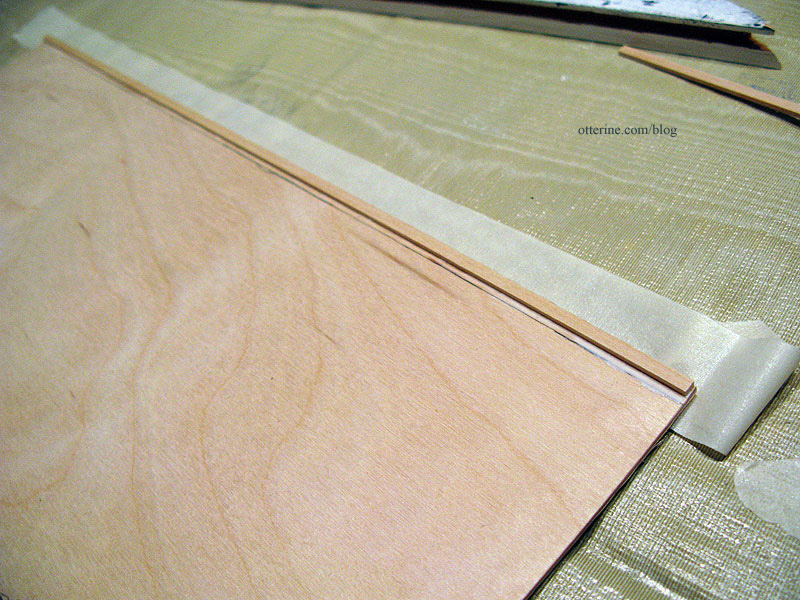
This would allow the siding pieces to sit on top of the plywood right against the connectors.
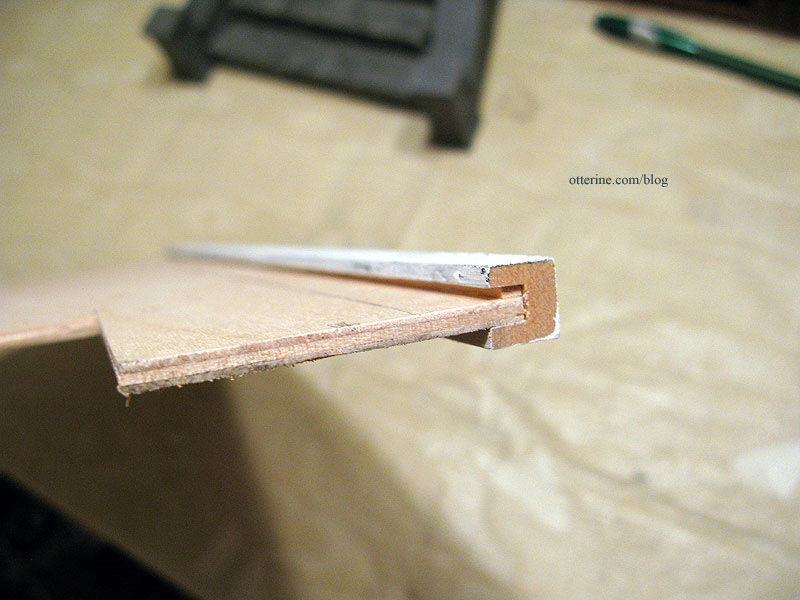
Siding should run up to the edge of the chimney, not behind it. So, I had to shave about 1/8″ off the back of the chimney at the foundation height.
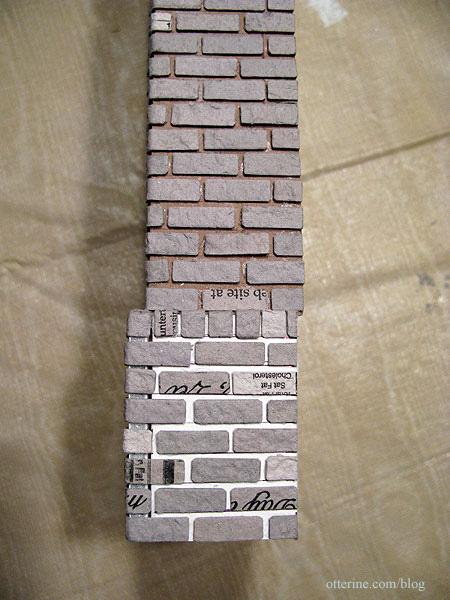
Scary to take a knife to my bricked chimney? Without a doubt, but it worked. Now, the chimney sits just over the foundation. It will attach to the plywood base wall, and the siding will conform to its edges.
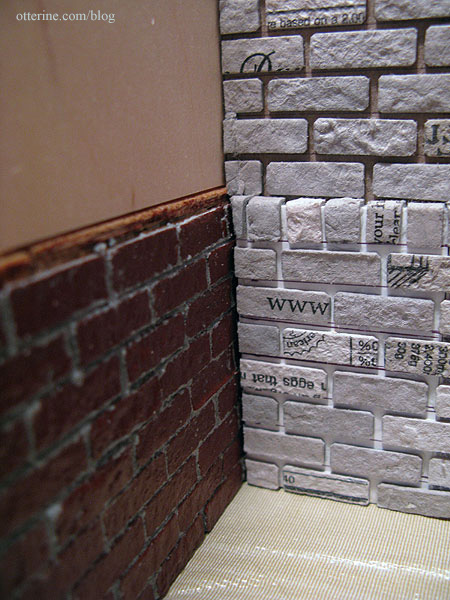
For the siding, I first taped the lower sheet to the side of the house. This wall is still removable to make it easier to work with. As you can see I already had traced around the chimney onto the plywood to help with placement.
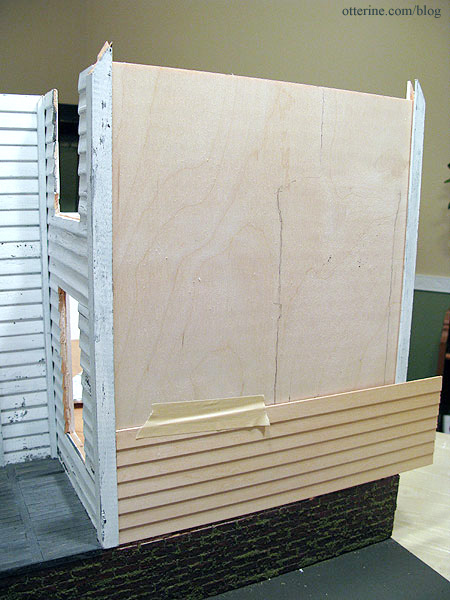
I traced around the chimney while the board was flat, using the outline drawn on the plywood base as a guide.
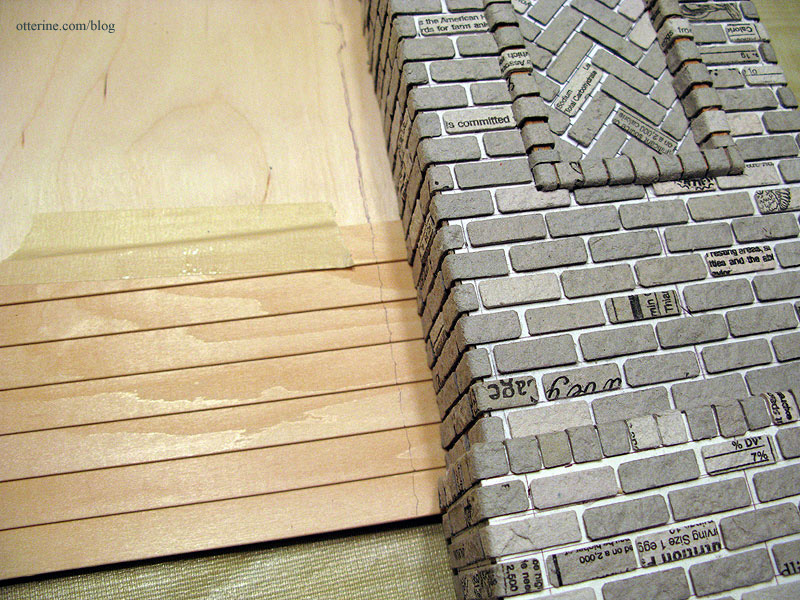
I then propped the wall back up to double check the tracing, to make sure I had the chimney level.
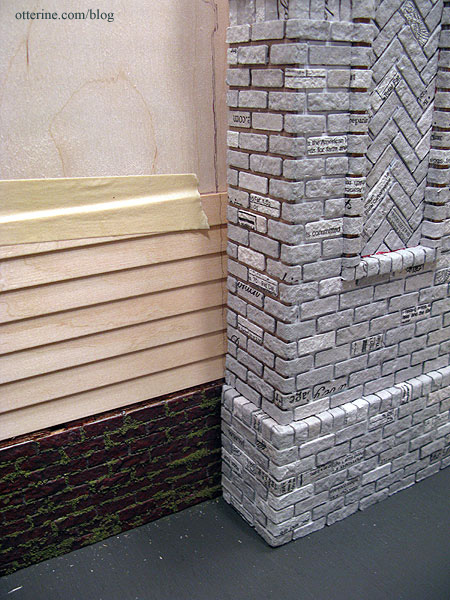
After cutting along the line, I taped the new piece of siding onto the wall and checked the fit again.
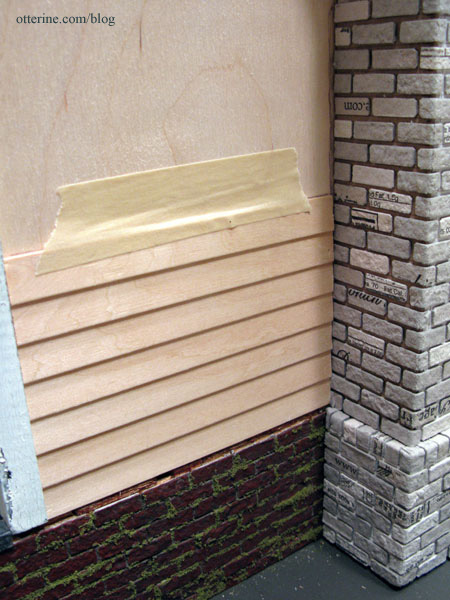
I glued this piece in place before moving onto the next. As I work on the replacement side wall and its new siding, Jasper has come to offer his assistance. :D
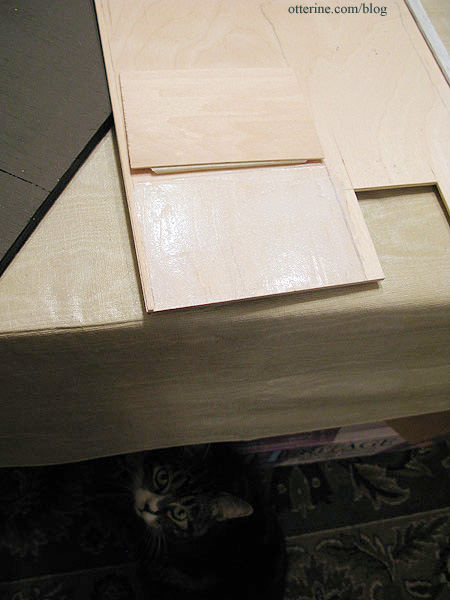
The next siding piece up has a notch cut for where the brick indents a bit on the chimney. I didn’t think to do this for the shingled gable, so I’ll likely have to patch those areas.
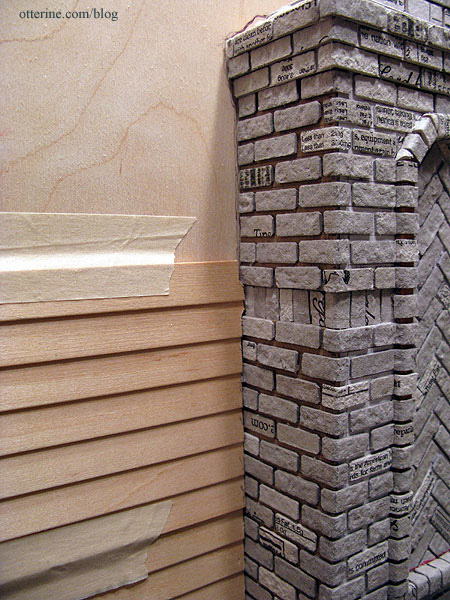
In order to finish up with the last two pieces of siding, I had to glue the lower and middle chimney sections together and will need to finish the transition between the two before permanently gluing these siding pieces in place. I went ahead and cut them, knowing if I had to adjust the fit at all, I would be cutting more away instead of needing to add. For now, the upper portion of the siding is taped in place.
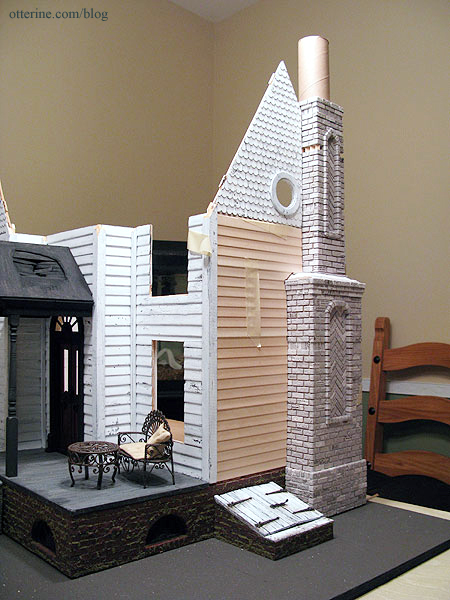
And, here is the wall with all of the siding to the left of the chimney in place. Not too many gaps. Paint should help a bit with that and what’s a creepy old chimney without some creeping old vines? Moss and ivy can always hide the more obvious flaws.
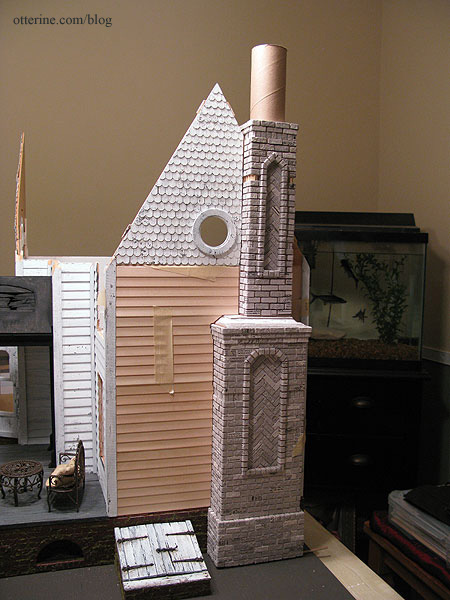
I’ll be filling in the siding and gable shingles to the right of the chimney after painting the chimney since the paint, grouting and sealing process might expand the egg carton bricks just enough to make the fit too tight. (You can see that finishing here.)
Update: I worked on the chimney portions I needed to complete in order to finish the siding. I was then able to finish cutting the siding pieces in order to glue them onto the replacement side wall and finished the wall by crackling white paint over a black under layer. As I had hoped, the mismatched siding now blends in well with the rest of the house.
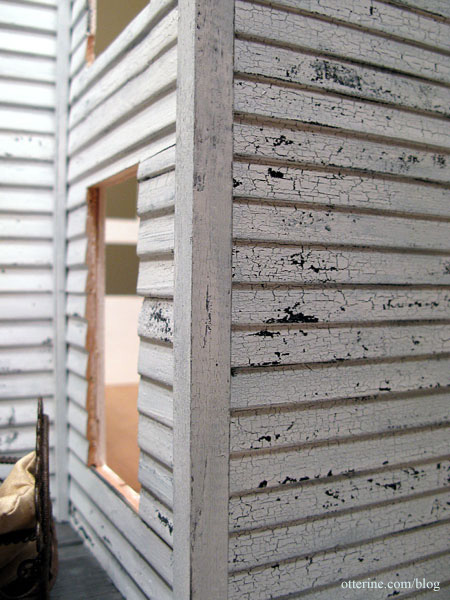
Categories: The Haunted Heritage
October 29, 2011 | 0 commentsHaunted Heritage chimney, part 4
Continuing work on the chimney. I finished up the right side of the lower chimney previously but before continuing on the angled top portion of the lower section, I had to work on the middle section. The top of the lower section will be made to fit the bottom of the middle section.
I applied cardboard layers to build up the dimensional surface and completed the smaller herringbone pattern for this middle piece.
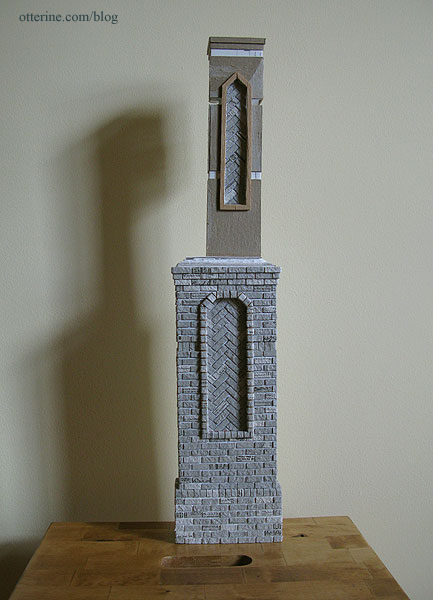
Here’s the middle section of the original W E Masonry chimney as a reminder.
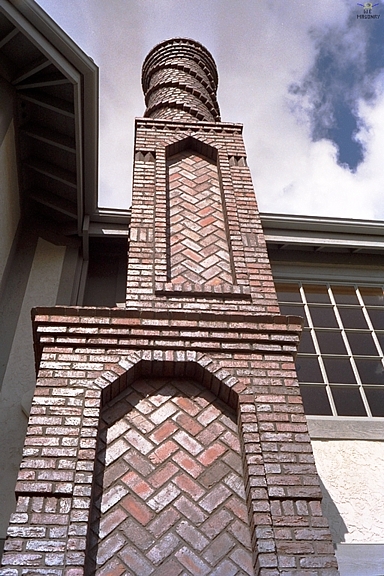
There were a few different challenges to this section, including a thinner herringbone patterned section as well as two rows of bricks set at an angle: one continuing on either side of the herringbone frame and one above it. These would be somewhat easy to do with actual bricks but not with two-dimensional egg carton bricks. I decided to replace the one on top with a plain vertical row instead of the angled bricks mainly because this row hits right at the roof line and I didn’t want to risk the stability of the top.
I gouged out the row on either side of the herringbone pattern and will fill this with the angled bricks later. This portion has wall support behind it and, once filled with the angled bricks, will be perfectly stable.
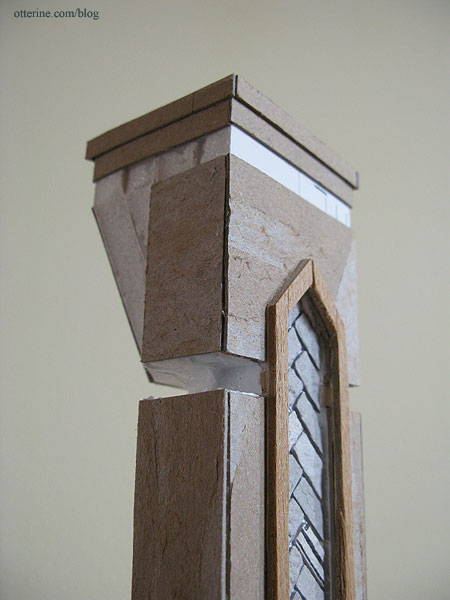
I added a flat piece of cardboard on top of the lower portion to even out the surface. The middle portion is still separate from the bottom portion. I’ll be gluing them together shortly but need to brace them against the outer house wall as the glue dries to ensure a good fit with the house.
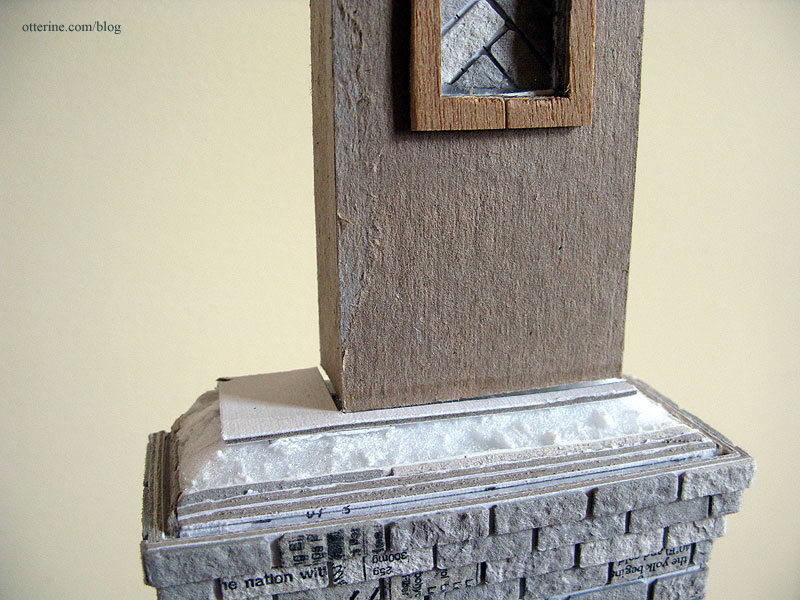
Now I am ready to brick this middle portion, then will come the topper.
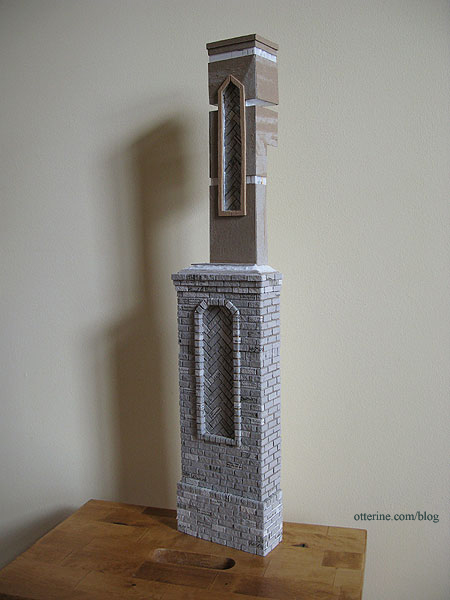
Here’s the chimney next to the house. I think it suits the house perfectly. :D
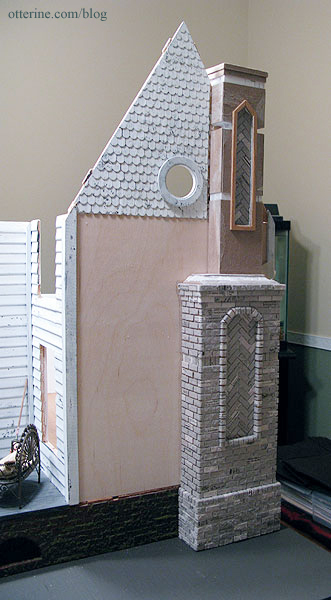
I’ve started bricking the top of the middle section. This small amount represents a few hours worth of work. Once I get through this portion, the rest should be much more straightforward.
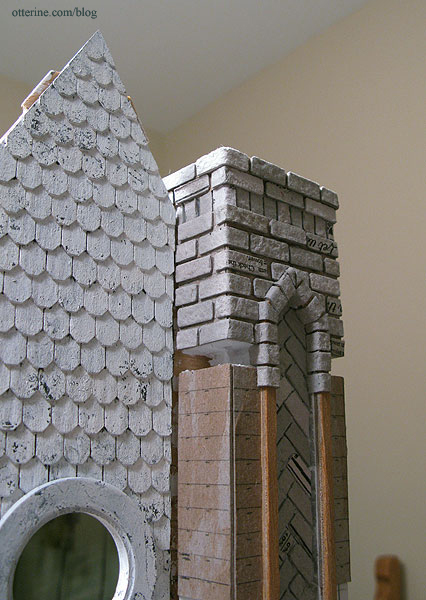
Categories: The Haunted Heritage
October 25, 2011 | 0 commentsHeritage – Portico, part 7
Continuing work on the portico. For the roof pieces, I used the now unnecessary porch roof piece from the original kit. It’s 1/8″ plywood that is old and brittle enough to be flexible.
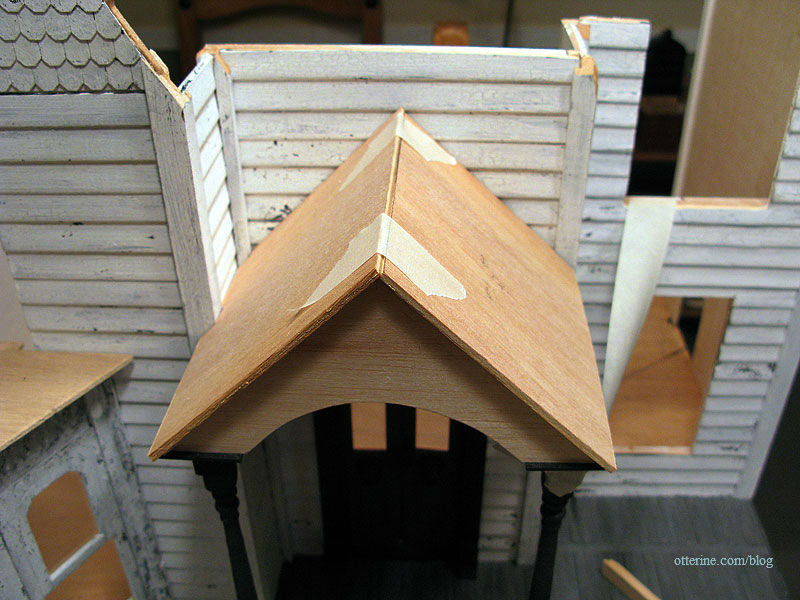
I cut a rough hole to show the rafters I added. I could never have done this with new plywood given the limited tools I have.
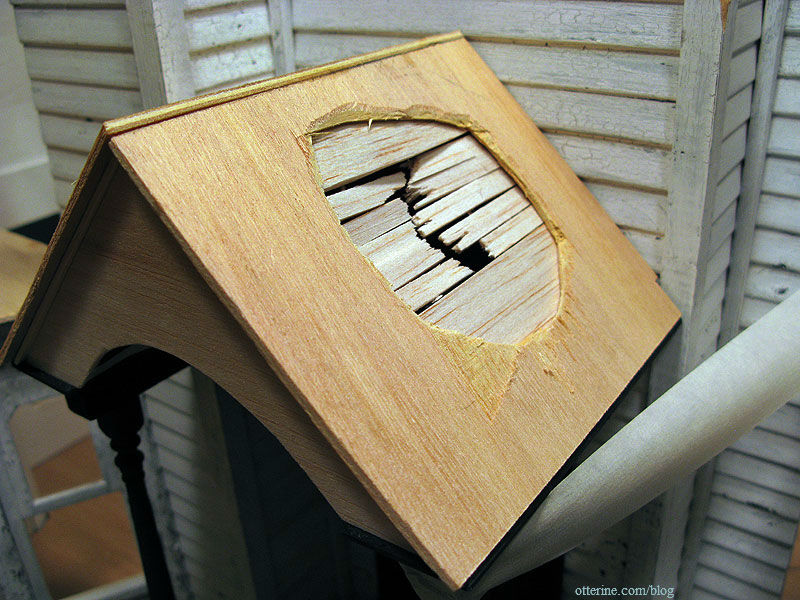
I then used wood glue to join the outer roof pieces to the portico structure. I cut the pieces with just a bit of overhang past the trim I had added earlier.
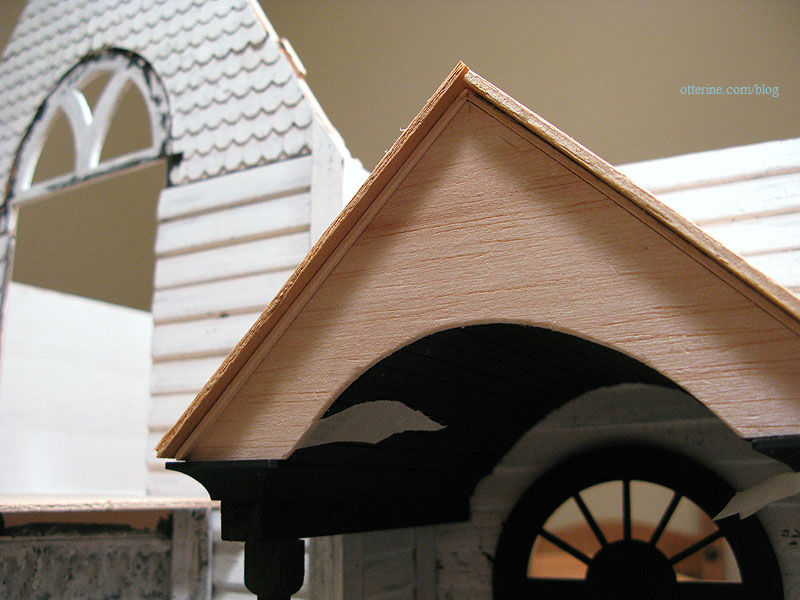
I painted the bare wood black. Again, this is all just the dark under layer. The portico and posts will be white, with dark shingles on the roof.
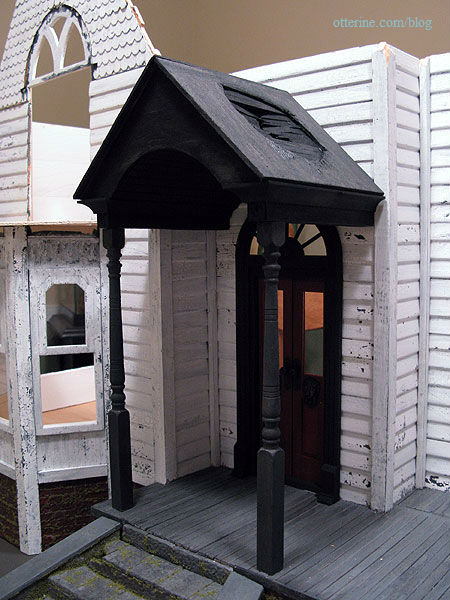
Since I wasn’t sure if the solid portions above and below the broken rafters would show during the shingling process, I added lines with a stylus to mimic the pattern of intact rafters.
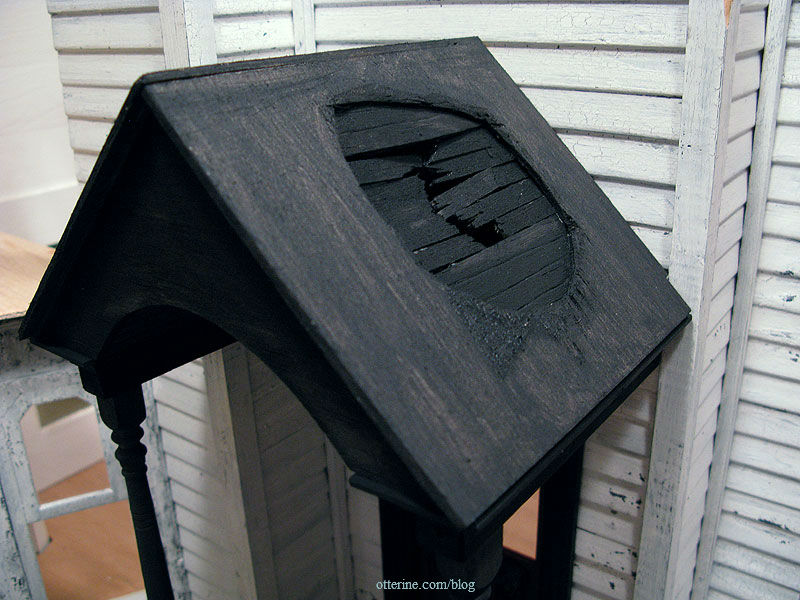
I love the line from the end of the steps to the point of the portico roof. It’s so much better than the original flat porch.
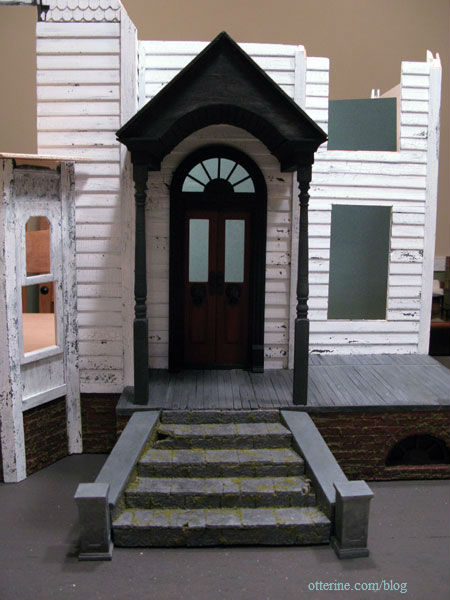
Categories: The Haunted Heritage
October 22, 2011 | 0 commentsLeaves!
I tried another experiment, too. I want autumn leaves around in my scene, but I want them to be realistic. I ended up using regular printer paper, markers in various reds, browns, oranges and yellows, and a Fiskars leaf corner punch to get some great results.
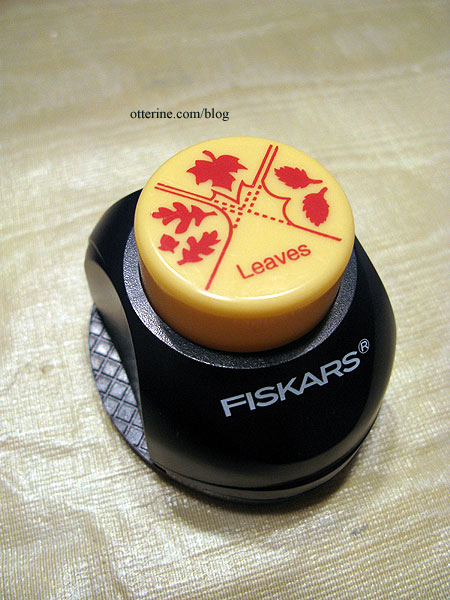
I cut strips of paper wide enough to give me two good corner punches. I colored the paper on both sides with the markers and let it dry almost completely. I then went over the paper a second time with the same color, again on both sides, and let it dry completely. I wanted a variety of colors as you can see. :]
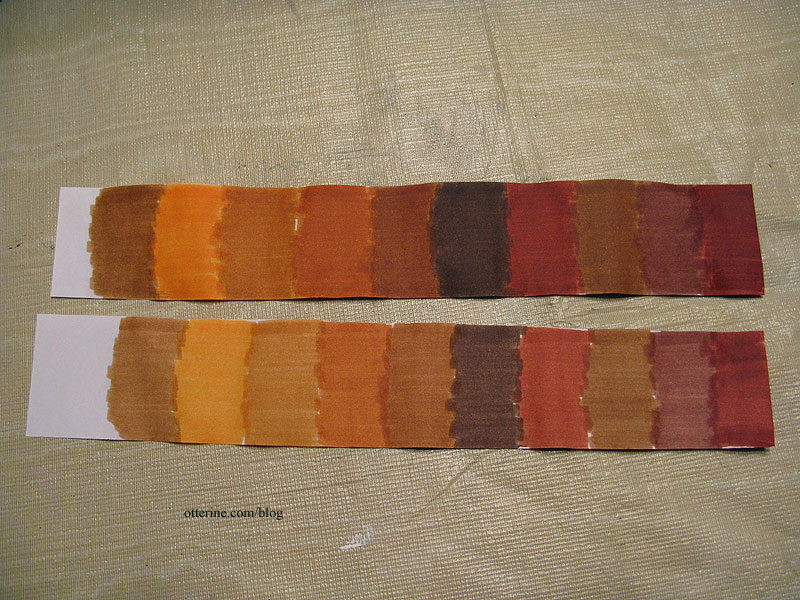
I also made two strips of browns only.
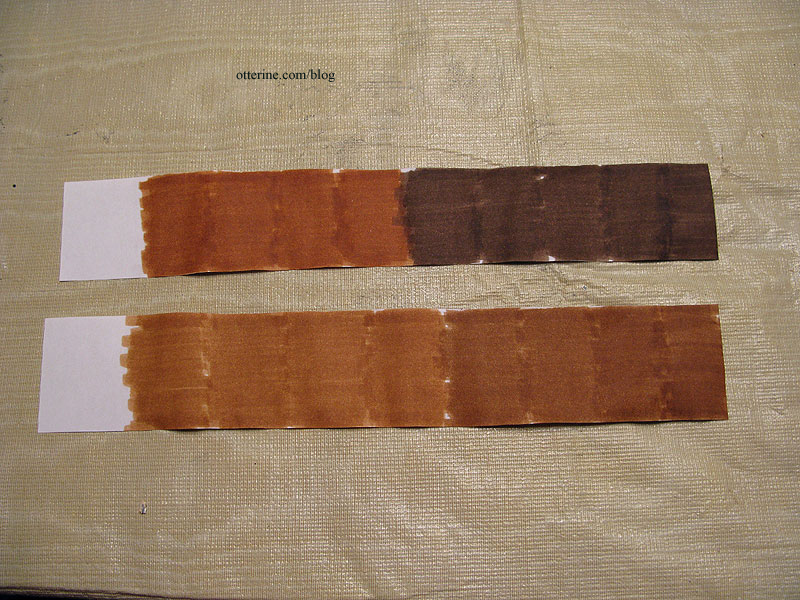
Using all three leaf shapes, I punched out leaves from both corners at the end of the strip and then cut the paper above the holes left behind. I then punched the next section and so on. The markers had curled the paper a bit, which added some nice texture to the punched leaves.
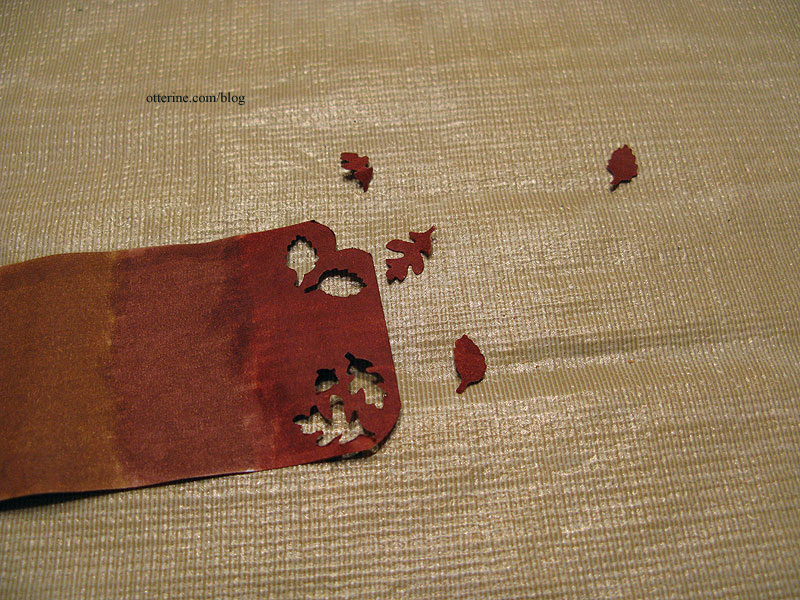
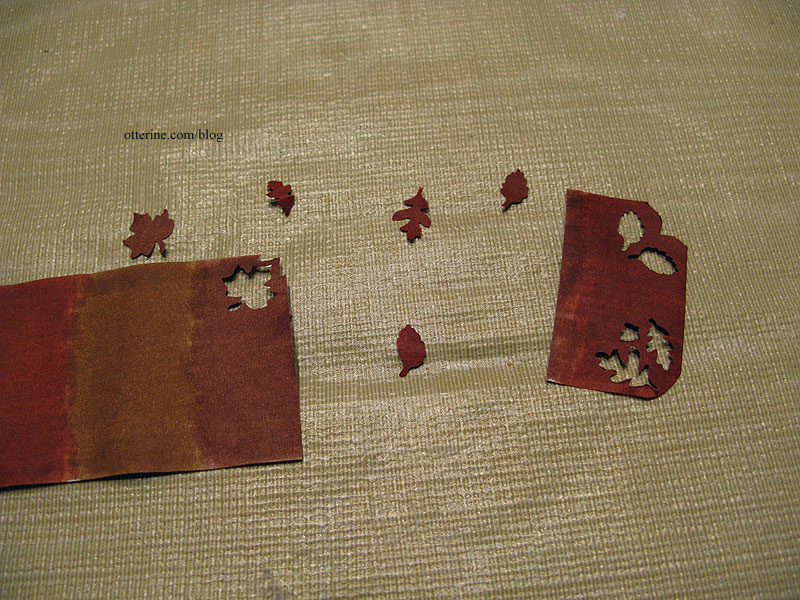
Nice little pile of leaves with good variegated color and thin texture. :D
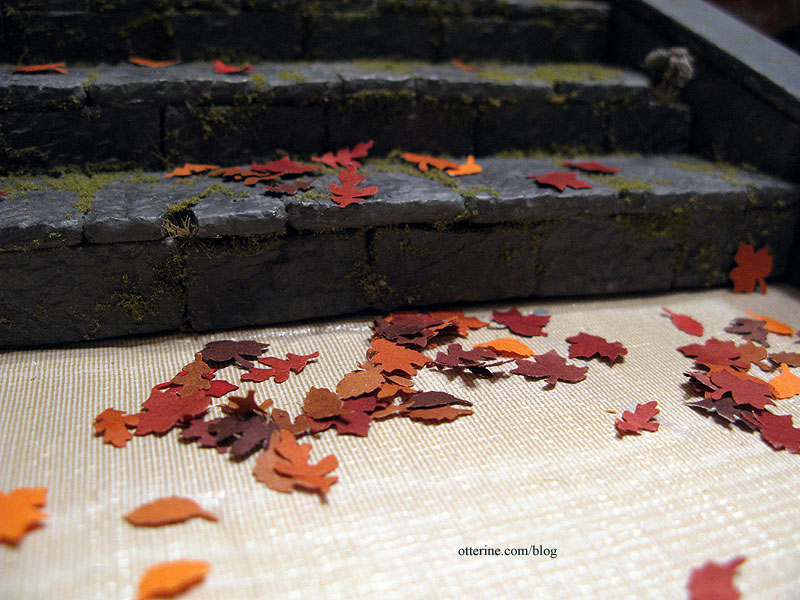
I have more in store for these leaves to add to the realism, but it’s a good start!
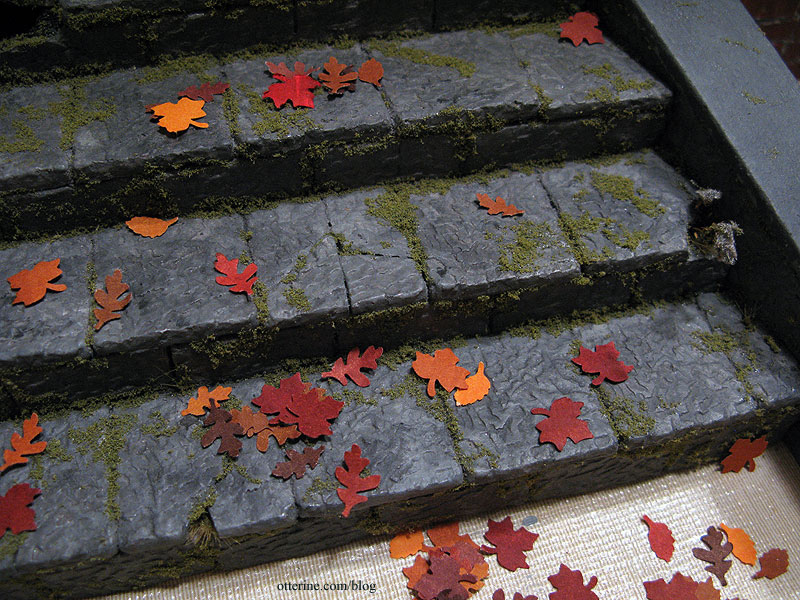
As you can see, I’ve been making all sorts of colors, some deep in hue and some faded. I absolutely love the way they turned out!
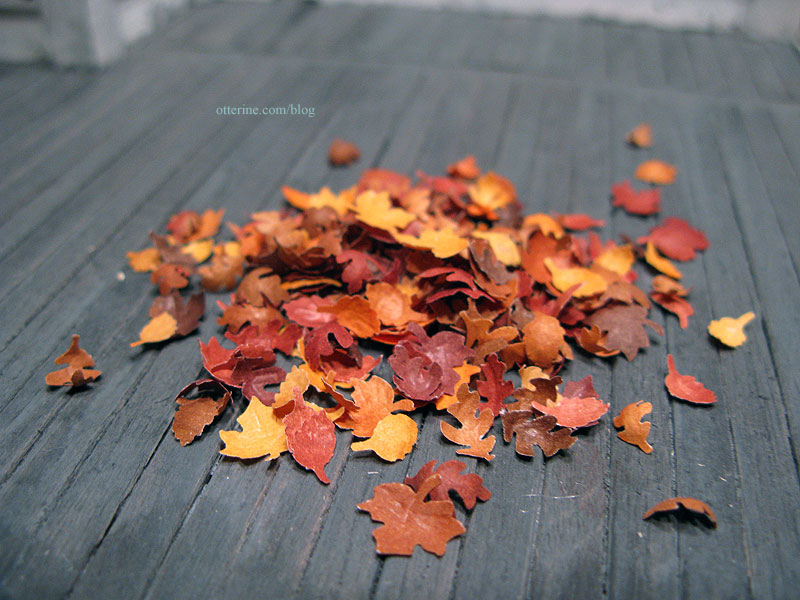
I used a ball stylus to create veins in the leaves. The stylus not only curled them but it made the top side shiny.
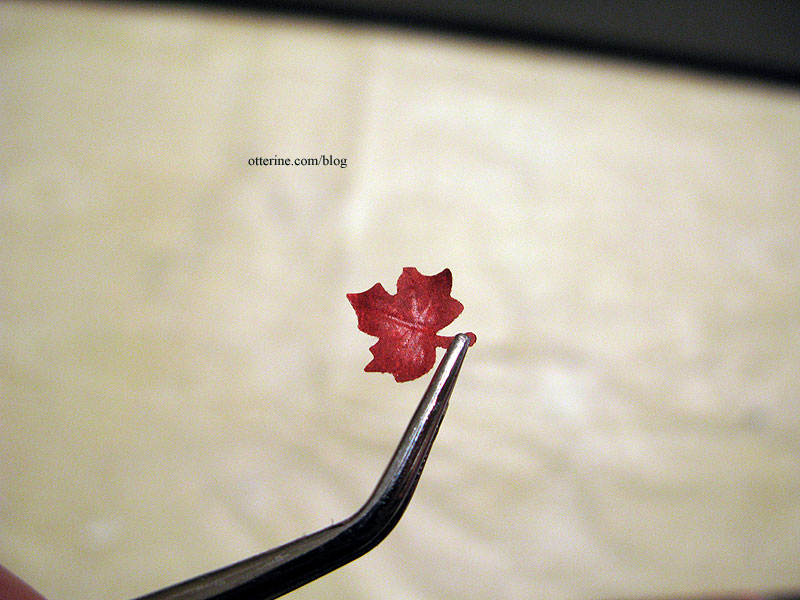
It also left raised veins on the backs.
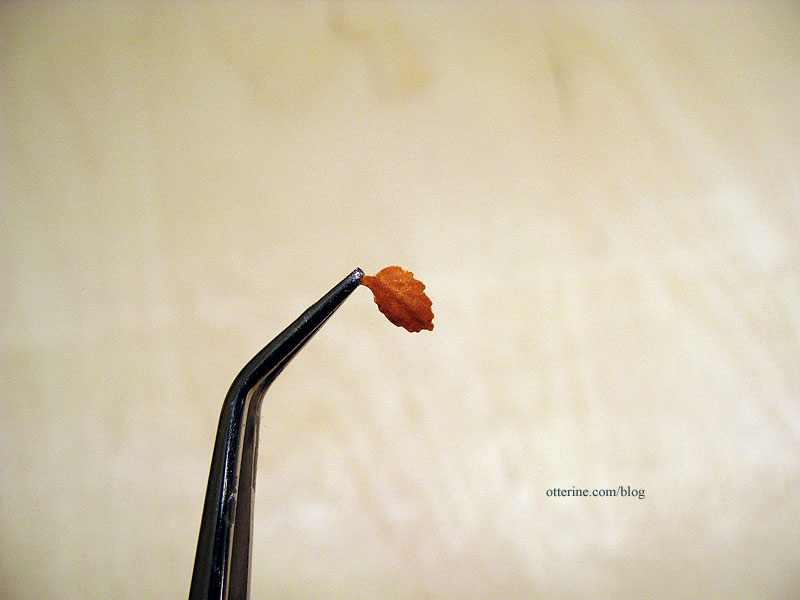
The only thing that gives them away up close is the large stem. I could cut each one down and color it darker, but really? I have to draw the line of sanity somewhere. I’m already adding veins to each one individually.
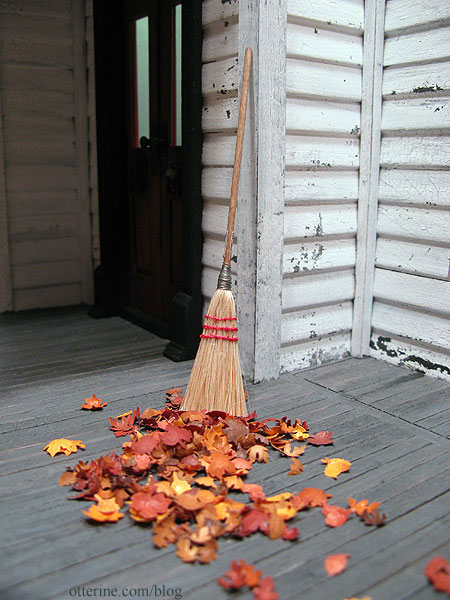
Besides, they are very convincing when viewed as a group. :D
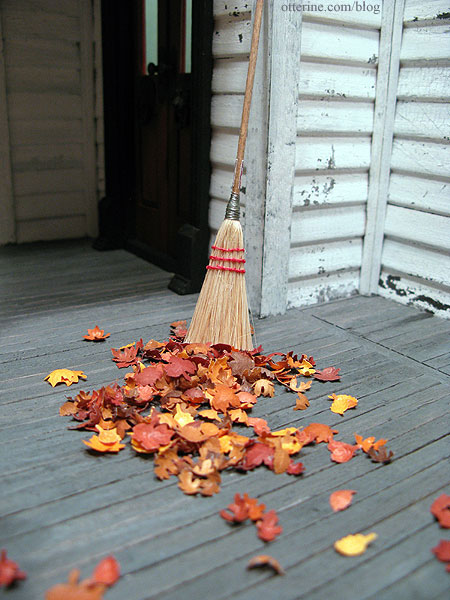
Categories: Flowers, plants, and trees, The Haunted Heritage
October 20, 2011 | 0 commentsHeritage – Portico, part 6
Continuing work on the portico. First, after raising the roof structure, I had to cut new front posts. Much better.
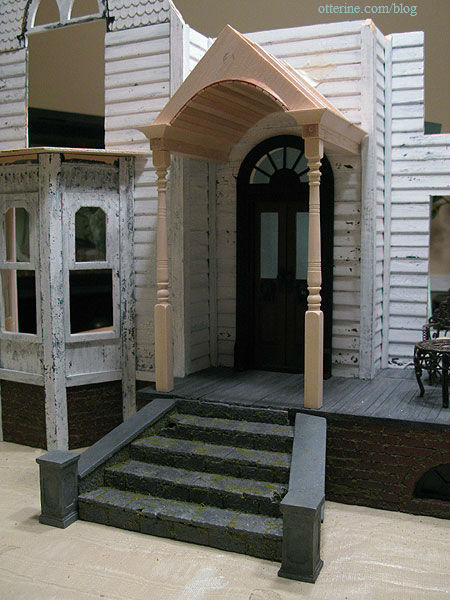
I then painted the structure black. Sinister, no? ;] It won’t stay this color. The black is merely the base layer.
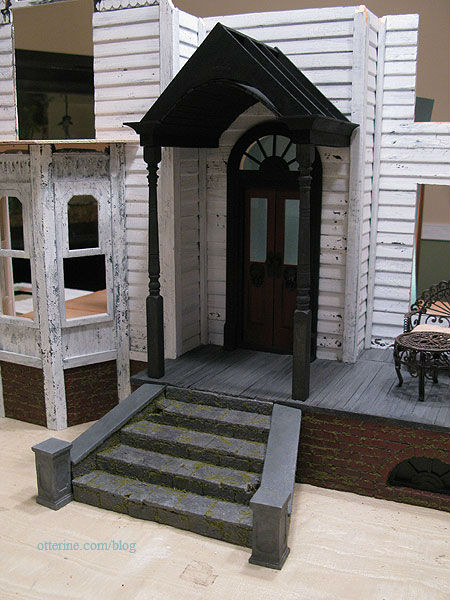
I wanted the roof of the portico to look worn and in need of some repair. I began by cutting pieces of 1/8″ thick balsa to build up the roof, one piece for each side. On the outer side of the portico, I added a section of rafters.
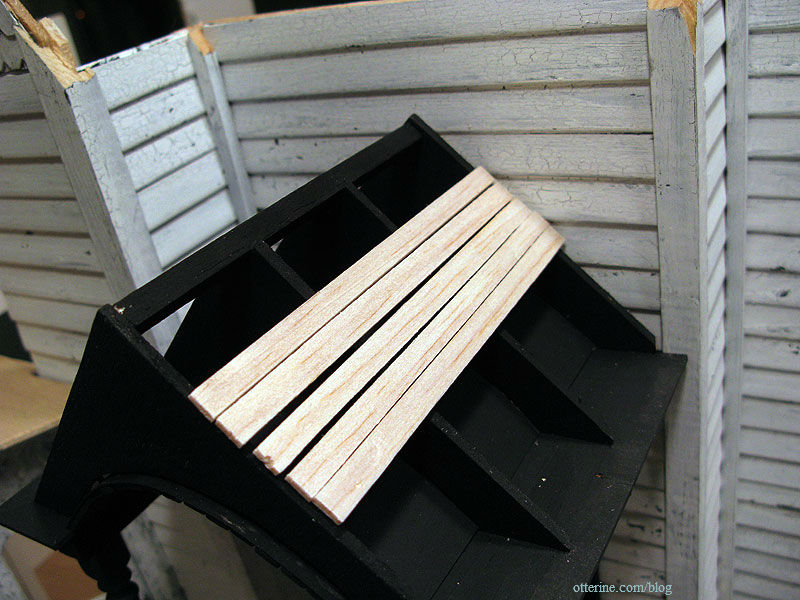
To get a deeper sag in the roof, I cut down the triangular roof supports. The second one broke as I was cutting but it snapped back in place.
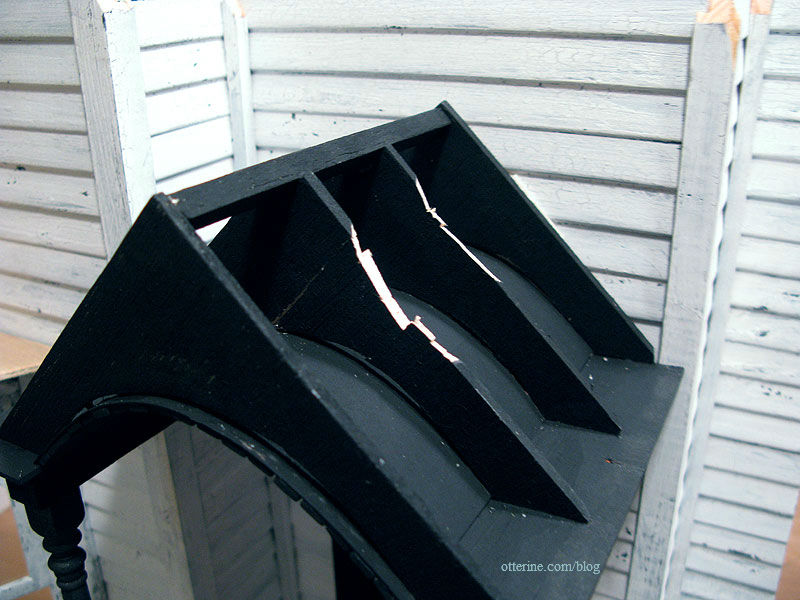
I then broke the rafter pieces near the middle, splintering them and cutting them short on the ends to leave a gap. I left a little bit of breathing room between the rafters as well. Lyssa better get those raccoons ready!
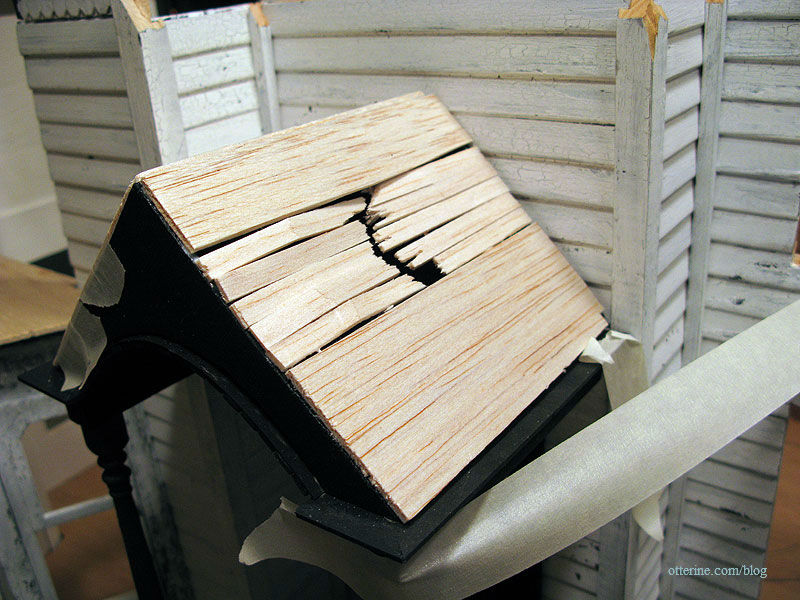
For the side near the house, I left the first layer of wood untouched.
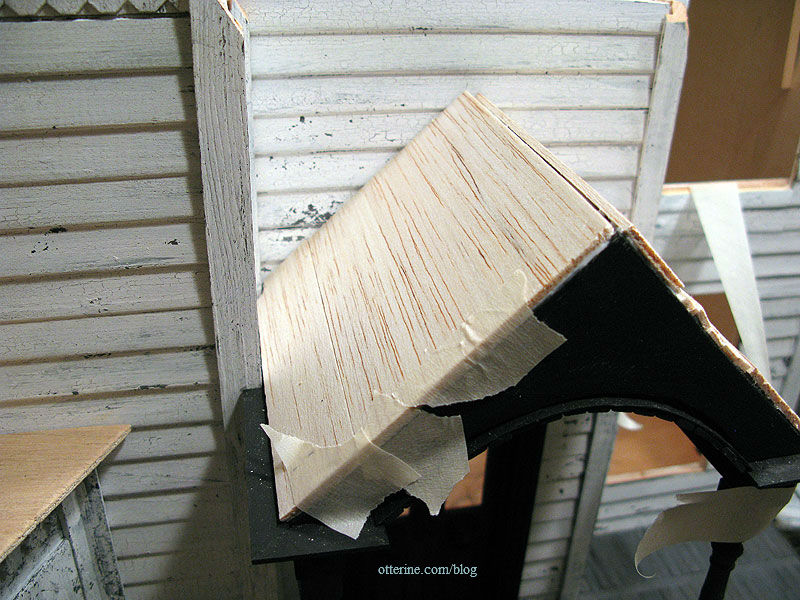
I added 1/8″ x 1/8″ strip wood to the frame to push the facade forward, matching the depth I had made with the ceiling boards.
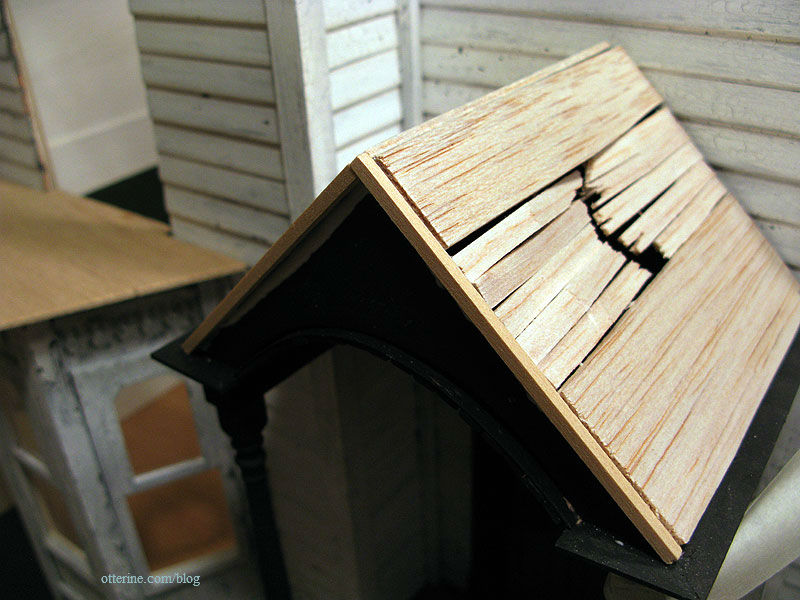
I then cut the facade piece for the front of the portico. I had planned to use bass wood but opted for 1/8″ thick balsa instead. It’s just easier for me to cut with hand tools and end up with a good curve. I was able to sand it smooth, and it’s only slightly off from the front curve of the ceiling boards.
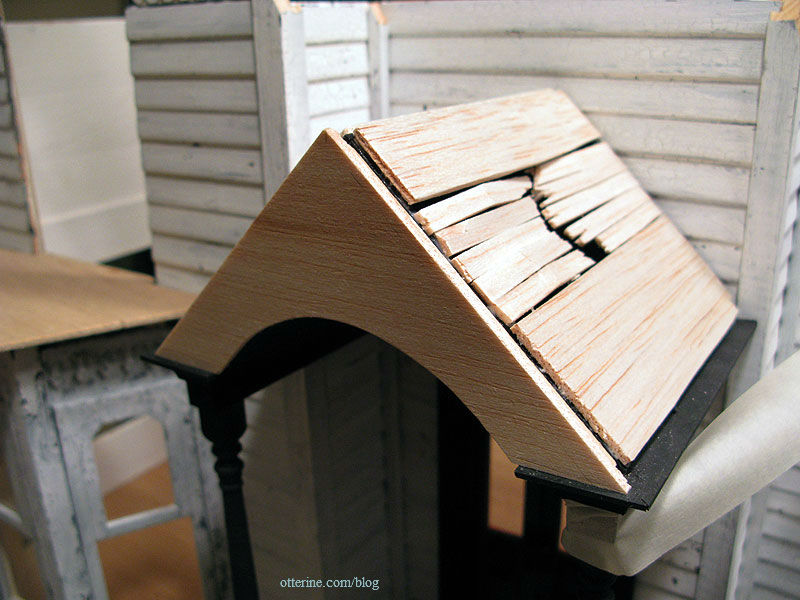
On top of the facade, I added 1/16″ x 1/4″ strip wood to trim between the facade and the yet to be cut roof pieces.
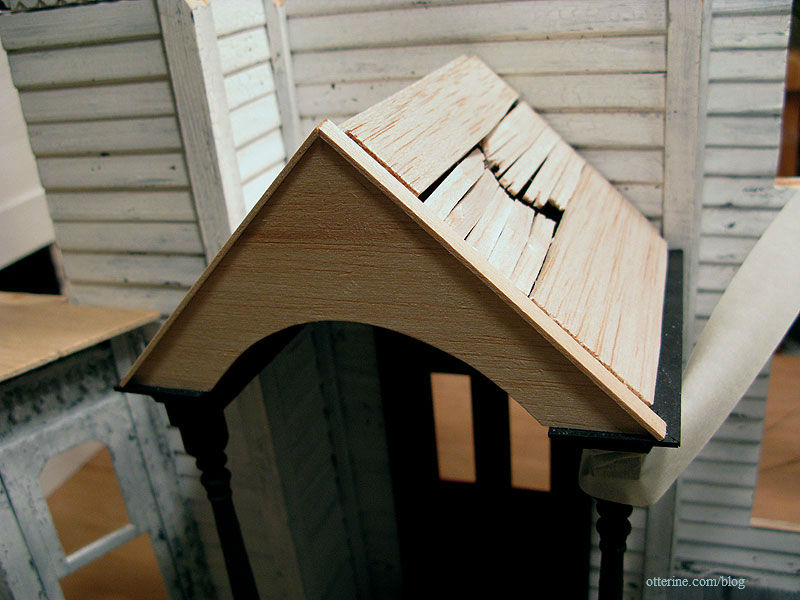
If this all seems a bit random, it’s because it is. I really made things up as I went along. If something didn’t fit, I added or cut down. A lot of trial and error went into this portico.
For instance, once the upper trim was in place, there was a discrepancy between the level of the trim and that of the roof on the side of the house. To fix it, I added a bit of extra wood, but only at the bottom. This will cover the discrepancy on the outer edge while allowing for a sagging roof toward the top and back. I knew I wanted a sagging roof all along, but I had to figure out how to get there.
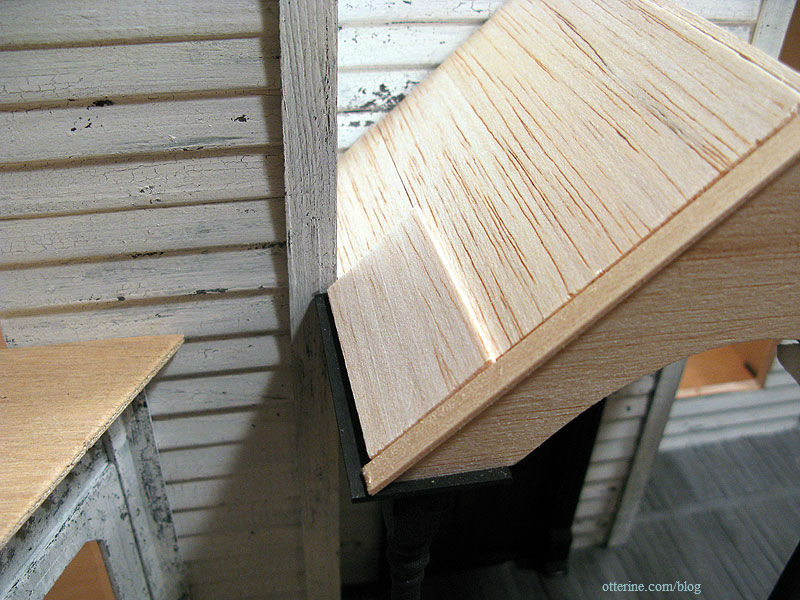
I think it’s turning out well so far. Upping the creep factor, just a smidgen.
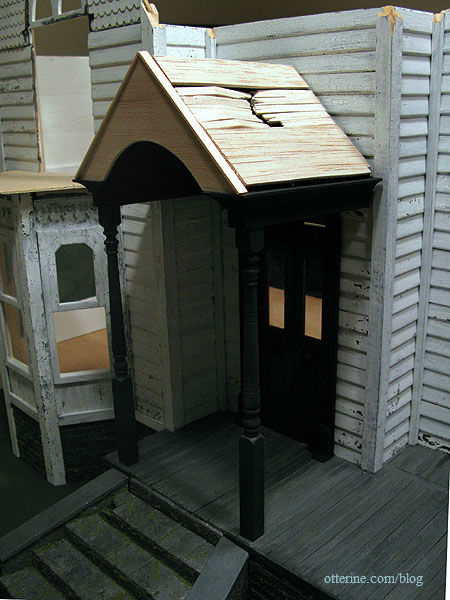
Categories: The Haunted Heritage
October 19, 2011 | 0 comments
NOTE: All content on otterine.com is copyrighted and may not be reproduced in part or in whole. It takes a lot of time and effort to write and photograph for my blog. Please ask permission before reproducing any of my content. Please click for copyright notice and Pinterest use.






































